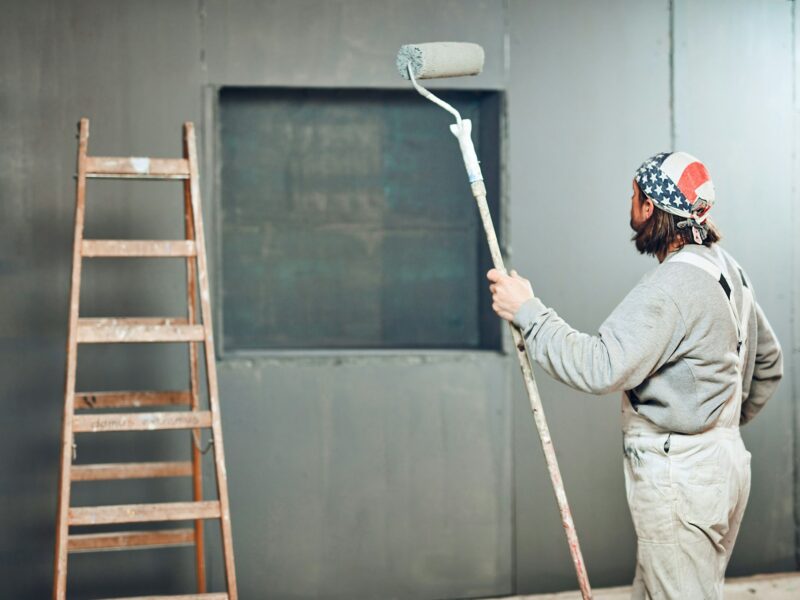Choosing the right roofing material for your home is a crucial decision. The roof protects your home from the elements and plays a significant role in its overall aesthetics. With numerous roofing options available, it’s essential to understand the pros, cons, and factors to consider for each material. In this article, we’ll compare different roofing materials, providing insights to help you make an informed choice.
Asphalt Shingles: A Popular and Affordable Option
One popular and affordable option is asphalt shingles. They are known for their affordability, versatility, and ease of installation. Asphalt shingles come in a wide range of styles and colors, allowing you to choose an option that suits your home’s architectural style.
Pros:
– Affordable compared to other roofing materials.
– Easy to install and repair.
– Durable and can last around 20-30 years with proper maintenance.
– Available in various colors and styles.
Cons:
– Less resistant to extreme weather conditions compared to some other materials.
– May have a shorter lifespan compared to more premium options.
– Not as eco-friendly as some other roofing materials.
Metal Roofing: Durability and Energy Efficiency
Metal roofing has gained popularity due to its durability, longevity, and energy efficiency. It’s available in various metals, such as steel, aluminum, and copper, offering different aesthetic options. Metal roofs are known for their ability to withstand harsh weather conditions and their resistance to fire, rot, and insect damage.
Pros:
– Exceptionally durable and can last 40-70 years or more.
– Offers excellent resistance against extreme weather conditions.
– Energy-efficient, as it reflects solar heat, reducing cooling costs.
– Low maintenance requirements.
Cons:
– Higher upfront cost compared to asphalt shingles.
– Can be noisy during heavy rain or hail.
– Requires professional installation for optimal performance.
When considering metal roofing, it’s advisable to consult with a reputable metal roofing company to explore the benefits, styles, and options available for your home.
Clay or Concrete Tiles: Aesthetically Pleasing and Long-Lasting
Clay or concrete tiles are renowned for their timeless beauty and longevity. They are a popular choice in Mediterranean and Spanish-style homes, adding a distinctive architectural flair.
Pros:
– Highly durable and can last 50-100 years with proper maintenance.
– Fire-resistant and can withstand extreme weather conditions.
– Excellent insulation properties, keeping the home cooler in hot climates.
– Available in a variety of colors and styles.
Cons:
– Heavy, requiring a strong roof structure for support.
– Higher installation cost due to the specialized expertise required.
– Fragile and can break if walked on or if heavy objects are dropped.
Wood Shingles or Shakes: Natural Beauty and Warmth
Wood shingles or shakes offer a natural and rustic charm to a home’s exterior. They are typically made from cedar, redwood, or pine, creating a warm and inviting aesthetic.
Pros:
– Aesthetically pleasing and provides a natural and unique look.
– Good insulation properties.
– Can last 30-50 years with proper maintenance.
Cons:
– Requires regular maintenance, including staining or treating, to prevent mold and rot.
– Prone to fire damage, although fire-resistant treatments are available.
– Vulnerable to insect infestation, although some types of wood may have natural resistance.
Synthetic Roofing Materials: A Blend of Durability and Aesthetics
Synthetic roofing materials, such as synthetic slate or composite shingles, offer a cost-effective alternative to natural materials while providing durability and aesthetics.
Pros:
– Mimics the appearance of natural materials like slate or wood.
– Lightweight and easier to install compared to natural counterparts.
– Resistant to rot, mold, and insects.
– Lower maintenance requirements compared to natural materials.
Cons:
– Quality and longevity may vary depending on the manufacturer.
– Can be susceptible to fading over time.
Factors to Consider When Choosing a Roofing Material
When selecting a roofing material, several factors need to be considered.
1. Climate: Choose a material that can withstand the specific weather conditions in your area, such as wind, rain, snow, or extreme heat.
2. Aesthetics: Consider how the roofing material will complement your home’s architectural style and overall aesthetic.
3. Cost: Evaluate each material’s upfront cost, installation expenses, and long-term maintenance requirements.
4. Lifespan: Determine the expected lifespan of the roofing material and factor that into your decision-making process.
5. Maintenance: Consider the level of maintenance required to keep the roof in good condition and ensure its longevity.
6. Energy Efficiency: Some materials offer better insulation and reflectivity, reducing energy consumption and costs.
7. Local Regulations: Check local building codes and regulations to ensure the selected roofing material meets the requirements.
Conclusion
In conclusion, choosing the right roofing material for your home involves weighing various factors such as cost, durability, aesthetics, and maintenance requirements. Asphalt shingles offer affordability, while metal roofing provides durability and energy efficiency. Clay or concrete tiles exude timeless beauty, and wood shingles or shakes offer natural warmth. Synthetic roofing materials provide a blend of durability and aesthetics.
Consider your specific needs, climate, and architectural style when deciding. By conducting thorough research and consulting with professionals, you can select the roofing material that best suits your home and ensures protection and long-lasting beauty for years to come.



